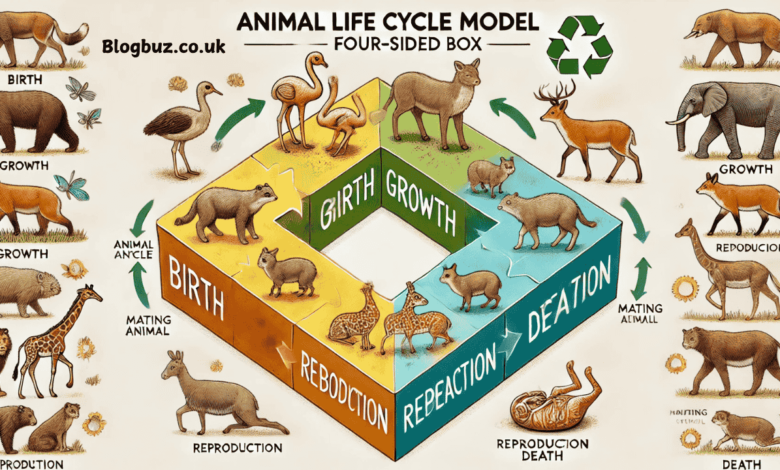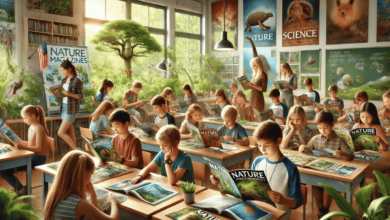Breaking Down Biology: Understanding the Animal Life Cycle Model Four-Sided Box

The concept of life cycles is integral to the study of biology, offering insights into the continuous cycle of birth, growth, reproduction, and death that characterizes all living organisms. The Animal Life Cycle Model Four-Sided Box is a simplified framework that helps students and educators understand these complex biological processes clearly and structured. This article explores the utility and applications of this model in educational settings and beyond.
Birth: The Starting Point of Life
The first side of the four-sided box represents the birth stage of an animal’s life cycle. Depending on the species, birth can occur in various forms, such as live birth in mammals like humans and elephants or hatching from eggs in birds and reptiles. This stage is crucial as it sets the foundation for the individual’s life, involving initial adaptations to the environment and early development. Educators use this stage to introduce concepts such as dependency on parents and initial growth milestones.
Growth: Development and Maturation
As the animal moves to the second side of the box, the focus shifts to growth and development. This phase covers the period from infancy to adolescence and into adulthood. It encompasses physical growth, behavioral changes, and the development of survival skills such as hunting or foraging, depending on the species. For example, a caterpillar eating leaves to store energy for its metamorphosis into a butterfly is a classic example used to explain metamorphosis—a significant transformation showcasing biological growth and change.
Reproduction: Ensuring Species Continuity
The third side of the box represents reproduction, a pivotal stage in which the animal reaches sexual maturity and reproduces to ensure the survival of its species. This phase can include a range of behaviors, from the simple release of gametes in sea creatures to complex mating rituals seen in birds and mammals. The model helps illustrate how genetic information is passed on to the next generation, emphasizing the importance of genetic diversity and adaptation in species’ survival.
Death: The End of the Life Cycle
The final side of the four-sided box model encapsulates the animal’s aging and death. This stage, often overlooked, is vital for maintaining ecological balance. It allows for the recycling of resources and provides opportunities for new life to flourish in the space left by the deceased organisms. The model presents death not as an endpoint but as an essential element of the life cycle that supports the continuity of life.
Educational Applications of the Four-Sided Box Model
The four-sided box model is not only a tool for understanding animal life cycles but also serves as an effective educational device. It simplifies intricate concepts, rendering them more comprehensible and relatable to students of all ages. Educators can employ this model to teach comparisons between the life cycles of different species, thereby enhancing students’ understanding of biological diversity and adaptation.
Advantages of Using the Four-Sided Box Model
- Simplification of Complex Concepts: The model breaks down the life cycle into four manageable stages, which helps students grasp detailed biological processes quickly.
- Visual Learning: Students can better understand and remember the information by visualizing each stage in a separate quadrant.
- Interactivity: Whether through physical models or digital simulations, the four-sided box model allows for interactive learning experiences, engaging students more profoundly.
Limitations and Considerations
Despite its numerous benefits, the four-sided box model has limitations. It may oversimplify the life cycles of organisms with more complex developmental stages or those that do not follow a linear path, such as amphibians that exhibit neoteny. Educators and students should be aware of these limitations and consider additional resources or models to capture the full complexity of life cycles in such cases.
Conclusion
The Animal Life Cycle Model Four-Sided Box is a powerful educational tool that offers a structured way to learn about the biological processes governing the lives of animals. Delineating life into four distinct stages provides clarity and facilitates easy learning and teaching of otherwise intricate life cycle phenomena. As with any model, it serves best when supplemented with detailed case studies and real-life examples, ensuring a comprehensive understanding of animal biology across various contexts.
FAQs on the Animal Life Cycle Model Four-Sided Box
What is the purpose of the Animal Life Cycle Model Four-Sided Box?
The Animal Life Cycle Model Four-Sided Box simplifies the concept of life cycles into four distinct stages: Birth, Growth, Reproduction, and Death. It is an educational tool to help students and educators better understand the biological processes that define animals’ lives.
How does this model enhance student learning in biology?
This model breaks down complex life cycle processes into manageable sections, making them easier to visualize and comprehend. Visual and interactive learning techniques engage students and foster a deeper understanding of biological diversity and adaptation.
Can the Four-Sided Box Model apply to all animal species?
While the model provides a general framework, it may not capture the complexities of certain species’ life cycles, such as amphibians or organisms with unique developmental stages. Additional models or resources may be needed to study such species comprehensively.
How can educators make the Four-Sided Box Model more interactive?
Educators can represent each stage using physical models, digital simulations, or group activities. For instance, they might use animations to show metamorphosis or create hands-on projects where students explore different species’ life cycles.
What are the limitations of the Four-Sided Box Model?
The model oversimplifies life cycles by focusing on four linear stages, which may not accurately reflect the complexities of some organisms. For example, species undergoing metamorphosis or exhibiting neoteny might require additional explanations beyond the model’s scope.
You May Also Read: BIOL1S01: Building a Strong Foundation in Biological Sciences




